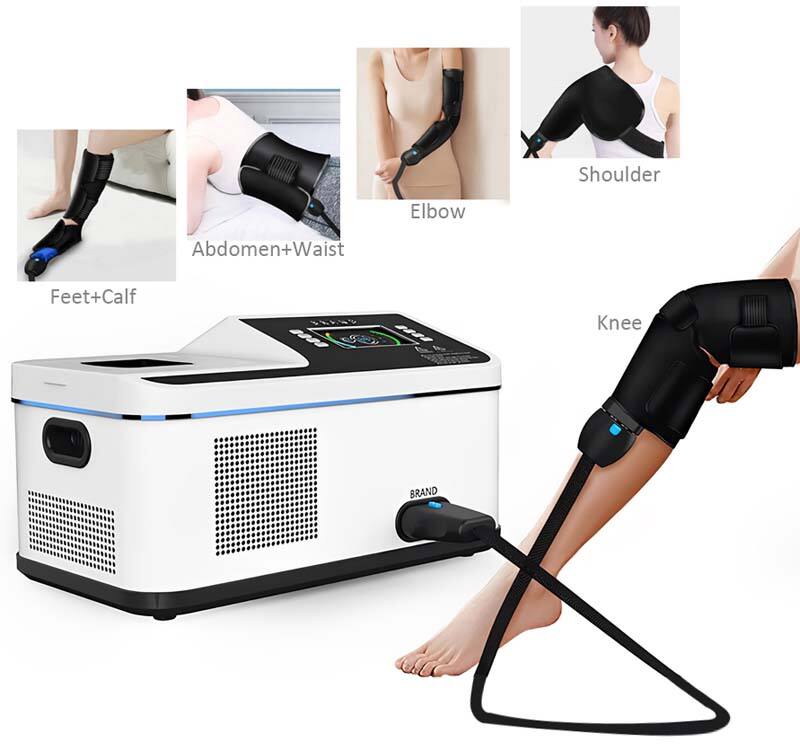Understanding the Science Behind Cold Therapy's Healing Powers
When injury strikes, the age-old remedy of applying cold therapy continues to prove its worth in modern medicine. From professional athletes to weekend warriors, cold therapy has become an essential component of injury recovery and pain management. This therapeutic approach, which involves applying cold temperatures to injured areas, works by triggering several physiological responses in the body that can significantly impact the healing process.
Cold therapy, also known as cryotherapy, has evolved from simple ice packs to sophisticated cold therapy systems used in medical facilities worldwide. Its effectiveness lies in its ability to reduce inflammation, numb pain receptors, and create optimal conditions for healing. As research continues to validate traditional practices, more healthcare professionals are incorporating structured cold therapy protocols into their treatment plans.
The Physiological Effects of Cold Therapy Applications
Immediate Tissue Response to Cold Exposure
When cold therapy is applied to an injured area, blood vessels undergo vasoconstriction, a natural narrowing that reduces blood flow to the affected region. This immediate response helps minimize swelling and inflammation in the early stages of injury. The cooling effect also slows down nerve conduction, which explains the numbing sensation that provides pain relief.
The body's response to cold therapy extends beyond surface-level changes. As tissues cool down, cellular metabolism decreases, which helps prevent secondary tissue damage that often occurs after the initial injury. This protective mechanism is particularly crucial in the first 24-48 hours following an acute injury.
Long-term Benefits on Healing Process
Regular application of cold therapy initiates a series of healing responses in the body. As tissues warm up between treatments, blood vessels dilate, bringing fresh oxygen and nutrients to the injured area while removing cellular waste products. This cycling between vasoconstriction and vasodilation creates a pumping effect that can accelerate the healing process.
Research has shown that consistent cold therapy application can lead to reduced recovery time, improved range of motion, and decreased need for pain medication. The therapeutic benefits often extend beyond the immediate treatment period, contributing to better long-term outcomes for various injuries and conditions.

Optimal Application Methods for Maximum Benefits
Duration and Frequency Guidelines
The effectiveness of cold therapy largely depends on proper application timing and duration. Most healthcare professionals recommend applying cold therapy for 15-20 minutes at a time, with at least 2 hours between sessions. This schedule allows for optimal tissue cooling while preventing potential cold-induced damage to the skin and underlying tissues.
For acute injuries, cold therapy should be applied more frequently during the first 48-72 hours, typically 4-8 times per day. As healing progresses, the frequency can be reduced based on individual response and professional guidance. Maintaining consistency in application times helps establish a therapeutic routine that maximizes healing benefits.
Proper Technique and Safety Measures
To achieve optimal results from cold therapy, proper application technique is crucial. Always use a barrier between the cold source and skin to prevent tissue damage. The cold source should be wrapped in a thin towel or protective covering, and the treated area should be monitored for excessive numbness or discoloration.
Different cold therapy methods require specific safety considerations. Whether using traditional ice packs, specialized cold therapy units, or cryotherapy chambers, following manufacturer guidelines and professional recommendations ensures both safety and effectiveness. Regular skin checks during treatment help prevent complications and ensure appropriate tissue response.
Applications Across Different Types of Injuries
Acute Sports Injuries and Trauma
Cold therapy proves particularly effective in treating acute sports injuries such as sprains, strains, and contusions. When applied promptly after injury, it helps minimize the initial inflammatory response and reduces the extent of tissue damage. Athletes often incorporate cold therapy into their immediate post-injury protocol to accelerate return to play.
The application of cold therapy in trauma cases requires careful assessment and timing. For severe injuries, combining cold therapy with other treatment modalities under professional supervision can optimize recovery outcomes. Regular monitoring and adjustment of treatment protocols ensure maximum benefit while maintaining tissue safety.
Chronic Condition Management
Beyond acute injuries, cold therapy shows promise in managing chronic conditions such as arthritis, tendinitis, and recurring inflammation. Regular cold therapy sessions can help control pain levels and maintain functional mobility in affected joints and tissues. Long-term users often report improved quality of life and reduced reliance on pain medication.
For chronic conditions, establishing a sustainable cold therapy routine becomes essential. Working with healthcare providers to develop personalized protocols helps ensure optimal benefit while accounting for individual factors such as tissue sensitivity and concurrent treatments.
Frequently Asked Questions
How soon after injury should cold therapy begin?
Cold therapy should be initiated as soon as possible after injury, ideally within the first few hours. Early application helps minimize inflammation and reduce the extent of tissue damage. However, always ensure proper medical assessment for severe injuries before beginning any treatment protocol.
Can cold therapy be combined with other treatments?
Yes, cold therapy often works effectively alongside other treatment modalities such as compression, elevation, and appropriate exercise protocols. However, timing and coordination of different treatments should be guided by healthcare professionals to ensure optimal results and prevent complications.
What are the signs that cold therapy is working effectively?
Effective cold therapy typically results in reduced pain and swelling, improved range of motion, and decreased tissue temperature during application. You should notice a cooling sensation without excessive numbness or discomfort. Progressive improvement in symptoms over several days indicates successful treatment.

